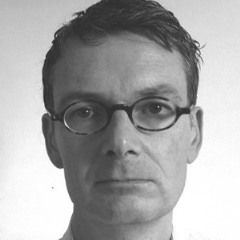Copernicus Sentinels Missions Calibration, Validation, FRM and Innovation Approaches in Satellite-Data Quality Assessment
A special issue of Remote Sensing (ISSN 2072-4292). This special issue belongs to the section "Remote Sensing Image Processing".
Deadline for manuscript submissions: 31 August 2024 | Viewed by 6455
Special Issue Editors
Interests: optics; vicarious calibration/validation methods; remote sensing; numerical modeling; oceanography
Interests: geophysical image processing; remote sensing; calibration; image classification; learning (artificial intelligence); image segmentation; radiometry
Interests: calibration and validation of optical remote sensing instruments; validation of level 2 remote sensing products (LST, vegetation parameters, AOD, FRP, IWV, SDR)
Interests: remote sensing; atmospheric composition; satellite validation; metrology
Special Issue Information
Dear Colleagues,
Continuous observation of the Earth by remote sensing satellites provides cost-effective acquisition of global data, which can be fed into internationally agreed key datasets, such as the Climate Data Records of Essential Climate Variables targeted by the Global Climate Observing System (GCOS) of the United Nations.
With the increasing number of spaceborne Optical, Thermal, Radar, and Microwave sensors, we are moving toward systematic and continuous global Earth observation of the most relevant processes in land, oceans, the atmosphere and over the cryosphere. Hence, the need for consistency among (past, present and future) EO remotely sensed data remains more than ever critical for building coherent time series of geophysical quantities.
Rigorous Calibration and Validation (Cal/Val) processes and protocols are required to ensure the highest quality of the data products and to document this quality, hence, building confidence in satellite data and in their use by the widest community. At the same time, new technologies emerge, new Earth observation methods appear, and new types of data become available, raising new Cal/Val challenges.
Accurate calibration and validation require the availability of Fiducial Reference Measurements (FRM), which are a suite of independent ground-based measurements with traceability to established standards and community protocols that provide independent validation datasets. For this purpose, the European Space Agency (ESA) and the European Organization for the Exploitation of Meteorological Satellites (EUMETSAT) support a series of Fiducial Reference Measurements (FRM) projects targeting the validation of satellite data products of the atmosphere, land, and ocean under the auspices of the Committee on Earth Observation Satellites (CEOS).
The goal of this Special Issue is to combine and summarize recent scientific advances related to the satellite Cal/Val techniques, FRM datasets and innovations in the field, with a focus on - but not limited to - the Copernicus Sentinels.
Potential topic areas covered by Copernicus Sentinels missions but are not limited to:
- remote sensing of atmospheric composition, land, ocean, snow and ice surface,
- calibration and sensors’ intercomparison,
- validation of geophysical data products,
- innovations to products’ retrieval algorithms and Cal/Val techniques,
- Fiducial Reference Measurements (FRM) for satellite data validation.
Dr. Bahjat Alhammoud
Dr. Sebastien Clerc
Dr. Steffen Dransfeld
Dr. Jean Christopher Lambert
Guest Editors
Pierre Féménias
Guest Editor Assistant
Manuscript Submission Information
Manuscripts should be submitted online at www.mdpi.com by registering and logging in to this website. Once you are registered, click here to go to the submission form. Manuscripts can be submitted until the deadline. All submissions that pass pre-check are peer-reviewed. Accepted papers will be published continuously in the journal (as soon as accepted) and will be listed together on the special issue website. Research articles, review articles as well as short communications are invited. For planned papers, a title and short abstract (about 100 words) can be sent to the Editorial Office for announcement on this website.
Submitted manuscripts should not have been published previously, nor be under consideration for publication elsewhere (except conference proceedings papers). All manuscripts are thoroughly refereed through a single-blind peer-review process. A guide for authors and other relevant information for submission of manuscripts is available on the Instructions for Authors page. Remote Sensing is an international peer-reviewed open access semimonthly journal published by MDPI.
Please visit the Instructions for Authors page before submitting a manuscript. The Article Processing Charge (APC) for publication in this open access journal is 2700 CHF (Swiss Francs). Submitted papers should be well formatted and use good English. Authors may use MDPI's English editing service prior to publication or during author revisions.
Keywords
- remote sensing
- calibration/validation
- fiducial reference measurement
- copernicus sentinel missions
- altimetry
- radiometry









